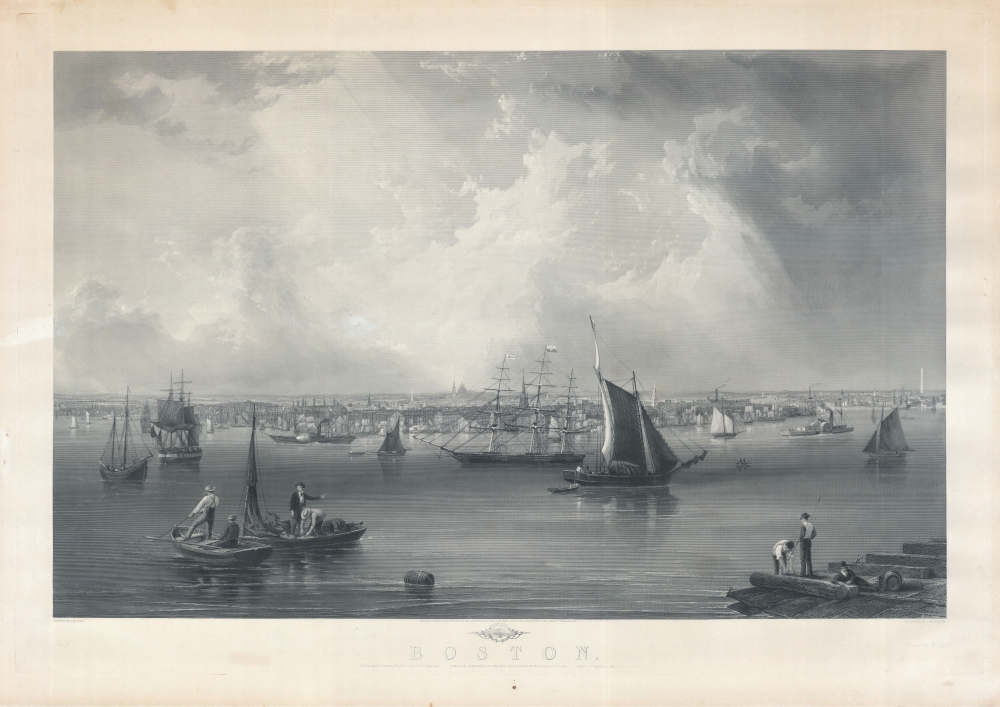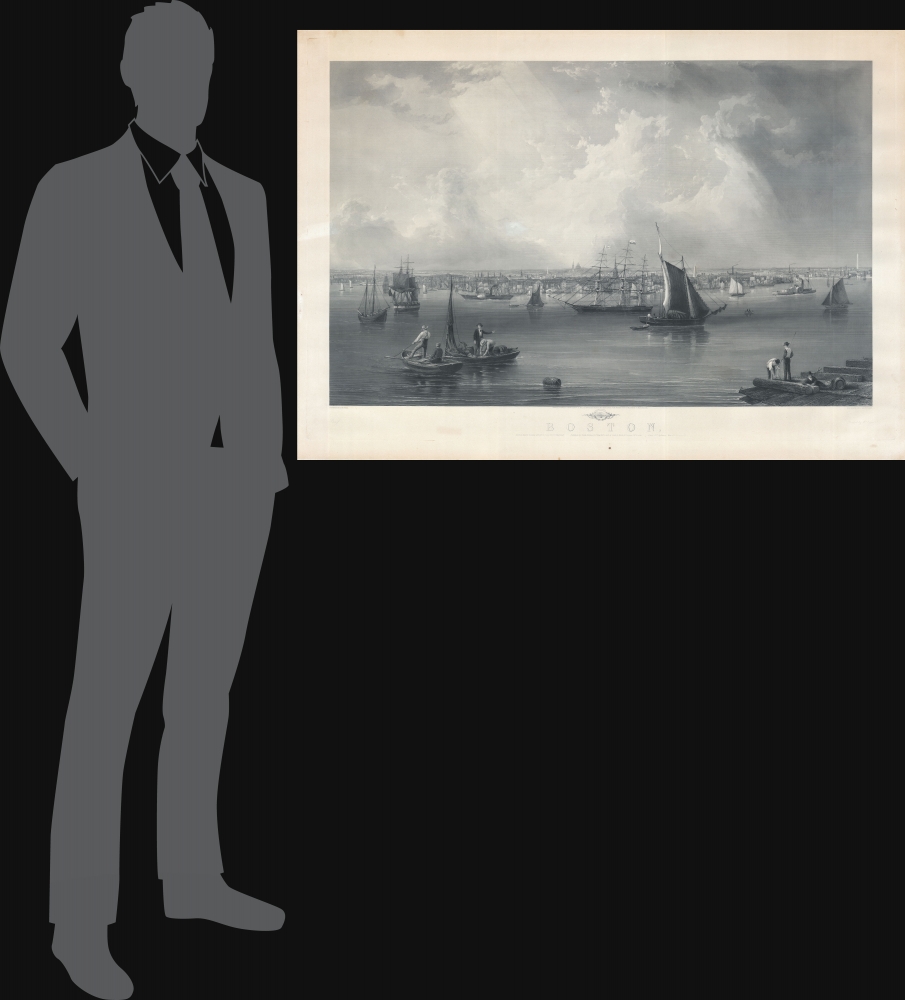1857 J. W. Hill View of Boston Harbor
BostonHarborView-hill-1857-2
Title
1857 (dated) 27 x 39 in (68.58 x 99.06 cm)
Description
Publication History and Census
The view is based upon a painting by the British-American artist John William Hill. It was afterwards engraved on steel by Charles Mottram and published in Boston by Benjamin Franklin Smith, who is identified in the copyright. It is of some note that this view differs markedly from most earlier Smith Brothers views, which were lithographs, in that it is a steel plate engraving. The oddity may be attributable to the fact that the Smith Brothers firm officially ceased operations in 1855. This view, and one other of Elmira, are likely solo projects taken on by Benjamin Franklin Smith without the assistance of his brothers, whose imprint nonetheless remains on the bottom of this view. Having sold his interest in Smith Brothers, Benjamin Franklin Smith was at this time was quite wealthy, and may have issued this view with a higher end market in mind. Doubtless, Smith envisioned an exceptionally rich market for this print, both domestically and internationally, and invested more in its production was usual for earlier Smith Brothers views of lesser American cities. He also negotiated co-printing arrangements with Paul and Dominic Colnaghi of London and Delarue of Paris, who are identified at the bottom of the view.Several reproductions of this view were issued in the early 20th century, but the present example is the original proof issue of 1857 and as such, quite rare and important. We offer it here uncolored as issued.
CartographerS
Benjamin Franklin Smith (1830 – 1927) was an artist, printer, and publisher of American city views active in the mid to late 19th century. Smith was born in South Freedom, Maine where he grew up on the family farm. His work is most commonly associated with his brothers, all of whom worked in the view-making industry, publishing both individually and separately as Smith Brothers. His brothers were Francis Smith, George Warren Smith, and David Clifford Smith. Among the brothers Benjamin, the youngest, was the most artistic, producing views as early as 1846, when he was 16. He drew his first city view, Albany as seen from the Hudson, at 17. Benjamin and his brothers initially worked as sales agents for viewmaker Edwin Whitefield. In 1849, the Smiths broke with Whitefield and began publishing under their own imprint, Smith Brothers. Benjamin Franklin drew at least four of the Smith Brother's views, and possibly significantly more. Reps suggests that the firm stopped publishing in 1855, but at least two important views, the 1857 Smith-Hill-Mottram view of Boston and the 1862 Smith view of Elmira, were issued later. Although both bear the Smith Brothers imprint, they were copyrighted by Benjamin Franklin Smith and are more likely than not, unassociated with the other brothers and their earlier views. In any case, the Smith firm was sold at an enormous profit in 1855, making the family extremely wealthy. They furthered their fortunes by investing in railroads. At the time of his death in 1927, Benjamin Franklin Smith was believed to be the richest man in Maine. More by this mapmaker...
John William Hill (January 13, 1812 – September 24, 1879) is a British-American landscape, still life, and view artist based primarily in New York City. Hill born in London, the son of aquatint engraver, John Hill. His family emigrated to the United States, settling in Philadelphian, in 1819. In 1822, they relocated to New York and opened an aquatint shop, at which J.W. Hill began an apprenticeship. In his early twenties, Hill began work for the New York State Geological Survey, producing topographic studies and overhead views of American cities and towns. There he developed a flair for rendering minute architectural detail and creating highly accurate perspectives. By the 1850s Hill embraced Pre-Raphaelite panting styles and represented that school in the United States. He was a founding member of the Society for the Advancement of Truth in Art. Learn More...
Charles Mottram (1807 - August 30, 1876) was an English steel plate, aquatint, and mezzotint engraver active in the 19th century. His work includes a vast corpus of views and illustrations ranging from engraved issues of famous paintings to unique city views. Mottram's work is admired application to steel plates of "sky tints" with the use of a ruling machine. Many of Mottram's plates enjoyed enduring popularity and were reissued well beyond his death into the 20th century. Learn More...




